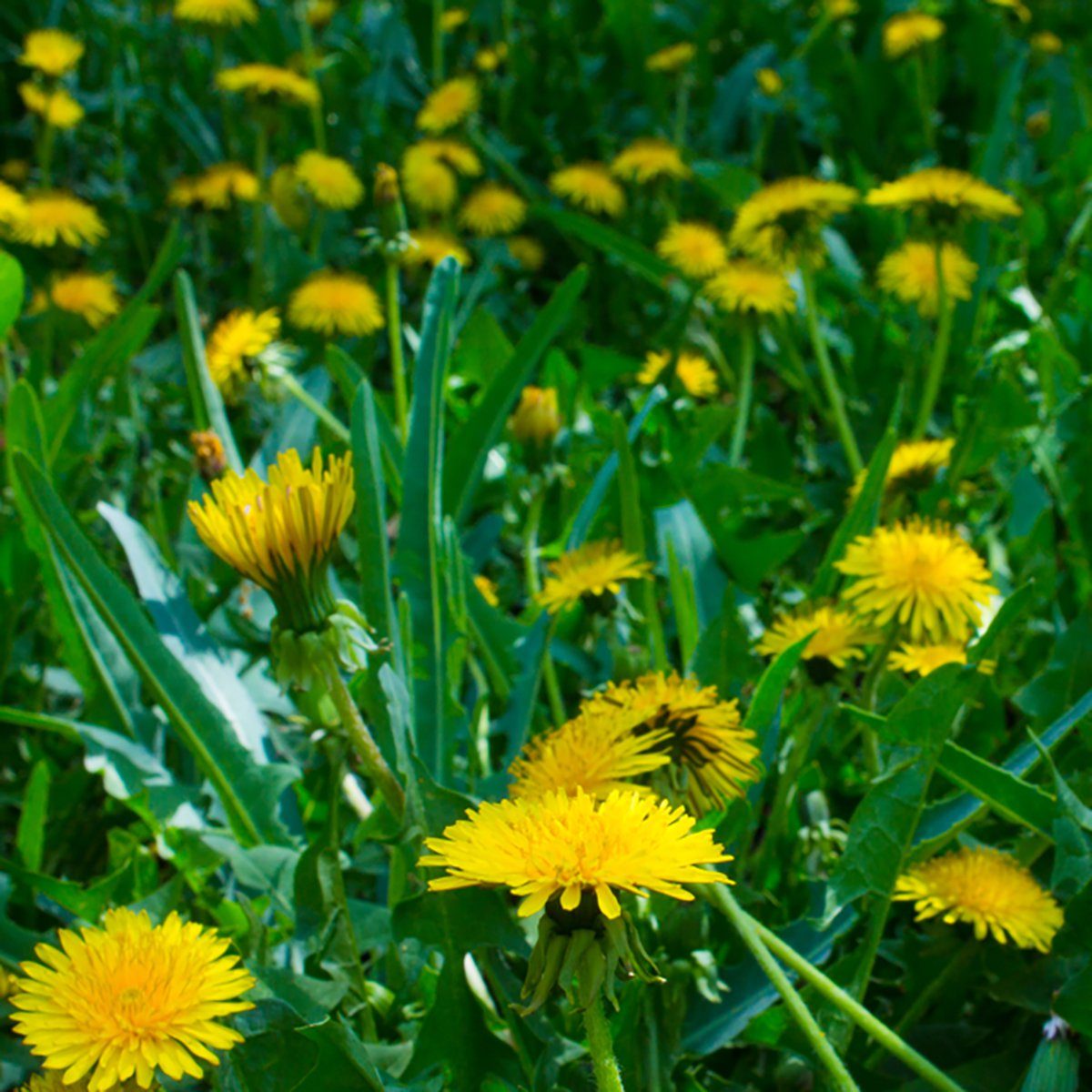Lawn grasses don't flower. So if you have yellow flowers in your lawn, it means you have unwanted visitors!

Guide to Common Weeds with Yellow Flowers

Weeds are opportunistic. They look for openings in the grass to germinate and grow. If your grass is thin or weak, weeds of all types will muscle their way in. A handful of them display yellow flowers, like dandelions and ragwort. They’re also often perennial weeds with deep root systems that can be difficult to eradicate from your lawn.
The best way to prevent weeds of any color from overtaking your lawn is to keep it thick and healthy. “Do this by moderately fertilizing your lawn two, maybe three times per season, and overseed thin areas with a quality grass seed mix regularly,” Joe Churchill, Senior Turf Specialist at Reinders says. Also, keep your lawn well-watered and only mow 1/3 of the blade height to help keep it healthy. In addition, apply selective herbicides to remove weeds with yellow flowers from your lawn.
On This Page
What Weeds Have Yellow Flowers?
There are a few, but the granddaddy of all is the common dandelion. Dandelions can be found in all 50 states and most of Canada. They are perennial weeds, meaning they’ll come back every year if left unattended.
Dandelions begin to grow early in the spring and flower as soon as temperatures allow. At their peak, heavily infested lawns will become a sea of yellow as the dandelions bloom. But they turn fuzzy gray as the flowers quickly turn to seed, losing their attractiveness.
Other broadleaf weeds that show a yellow flower are:
- Oxalis (yellow woodsorrel);
- Purslane;
- Common Ragwort;
- Annual snow thistle.

Why Yellow Weed Flowers are a Problem for Your Lawn
While many of these types of weeds are good for pollinators, they are not necessarily good for your lawn or garden. Many have deep root systems, which “makes them difficult to control once they invade lawns or flower beds,” according to Lawn Phix. “Most broadleaf weeds, like dandelions, are perennial weeds,” Churchill says, so they will come back year after year and reseed throughout your lawn.
Another weed with yellow flowers, ragwort, is toxic for some livestock, according to Country File.
How Do I Get Rid Of Them?
- For dandelions, “if you don’t mind a bit of physical work, go ahead and pull them or dig them out of the ground,” Churchill says. This works better after a rain when the ground is soft. Dandelions have a deep taproot that can be hard to pull entirely, so use a digging tool to get underneath and remove as much of the root as possible.
- Hand-pulling other weeds, such as black medic, oxalis and purslane is possible. But like dandelions, if you don’t remove the entire root, fragments left behind can potentially grow back.
- Home remedy herbicides using hot water, vinegar, Epsom salts and dish soap may work on some weeds if you prefer to avoid conventional herbicides.
- Dandelions are easily killed by just about any consumer herbicide labeled for use on broadleaf weeds. Products like Ortho Weed B Gon and Trimec Lawn Weed Killer are effective options. Always follow label directions when applying herbicides.
How Do I Prevent Yellow Flowers From Coming Back?
Weeds need room to grow. Proper lawn care to promote active turf growth and density will keep weeds from getting a toehold in your lawn. Responsibly watering and fertilizing your lawn to keep it strong and vital will keep the door slammed shut on weeds of all kinds. In addition, “if you have a large lawn or lots of weeds, treating them with a herbicide may be your best option,” Churchill says. “Remember to always follow the herbicide label.”
FAQ
How can I tell if a yellow-flowered plant is a weed or a wildflower?
Wildflowers are native plants, while weeds are typically non-native species. Yellow-flowered weeds and wildflowers may have similar looking flowers, so pay attention to a plant’s growth and spreading habits, as well as leaf shape, size and color for clues. Use plant identification websites or apps like PlantSnap to help you make a confident determination.
What’s the best time to deal with yellow-flowering weeds?
Early spring is the best time to apply preventative herbicides, before weeds flower and seed.
About the Expert
- Joe Churchill is a Senior Turf Specialist for Reinders, a major distributor of lawn care products throughout the Midwest. Churchill is certified in Turf Management and has over 25 years of experience in the turfgrass industry.




















